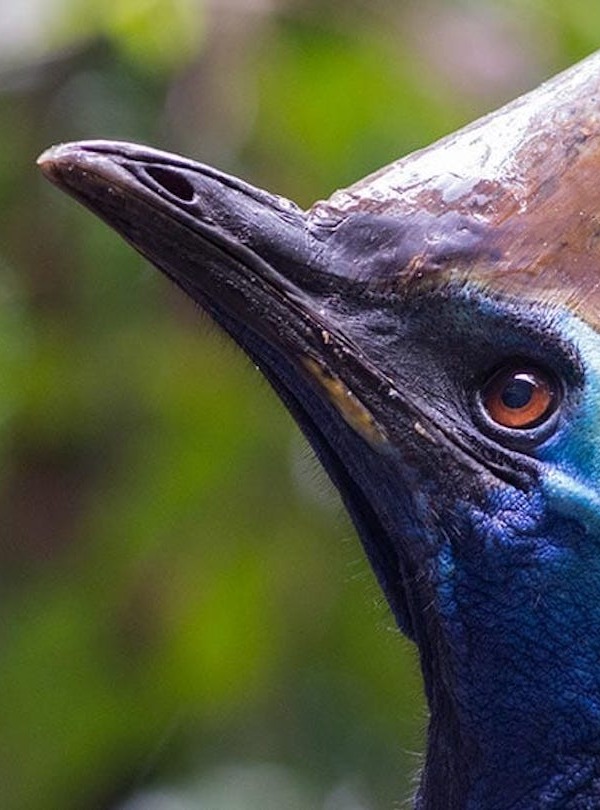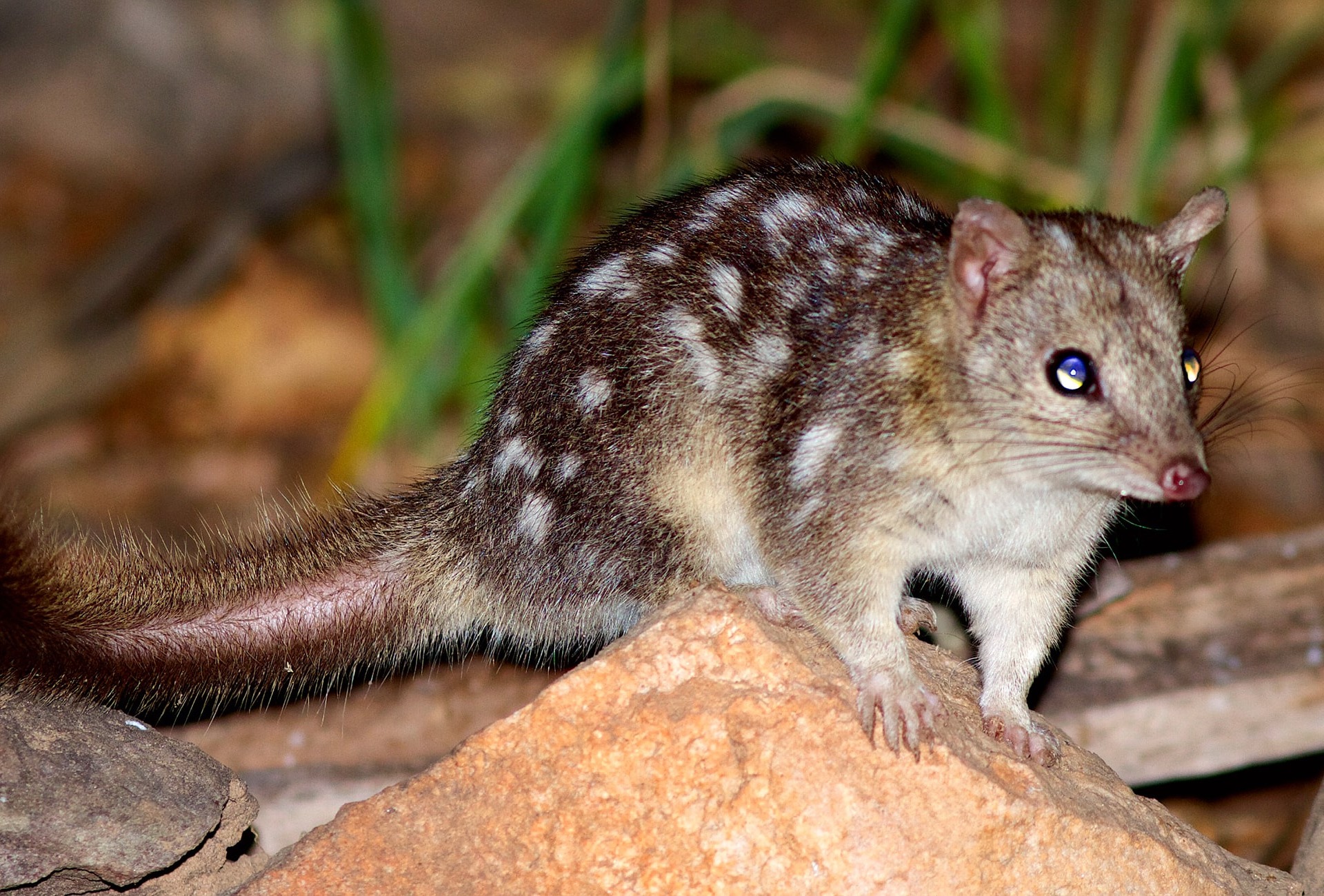
Massive Land Purchase for the Endangered Northern Quoll
Support More Work Like ThisSupport More Work Like ThisThe Caloola property strategically connects three bioregions and two wildlife corridors with a protected area network of 700,000 acres.
-
Species at Risk
Northern Quoll (EN)
-
Carbon stored
2,657,079 mT*
*(metric tons of CO2 equivalents) -
Partner
South Endeavour Trust
-
44,725 Proposed Acres Conserved by
Purchase
-
Project Cost: $1,414,129

44,725
The Caloola property strategically connects three bioregions and two wildlife corridors with a protected area network of 700,000 acres.
-
Species at Risk
Northern Quoll (EN)
-
Carbon stored
2,657,079 mT*
*(metric tons of CO2 equivalents) -
Partner
South Endeavour Trust
-
44,725 Proposed Acres Conserved by
Purchase
-
Project Cost: £1,063,254

44,725
The Caloola property strategically connects three bioregions and two wildlife corridors with a protected area network of 700,000 acres. It is also a key linkage between the Wet Tropics World Heritage Area and the proposed Cape York World Heritage Area. The major threats facing Caloola are housing development and invasion from exotic weeds.
Rainforest Trust sought $1,414,129 to support our local partner South Endeavour Trust in the purchase and protection in perpetuity of the 44,725-acre Caloola property. The property is remarkable for its very limited road access, which can both present major threats of weed invasion and altered wildfire patterns. If not purchased, this property would have likely been developed for housing, and a vital biological connection would have been lost forever.
Explore Australia
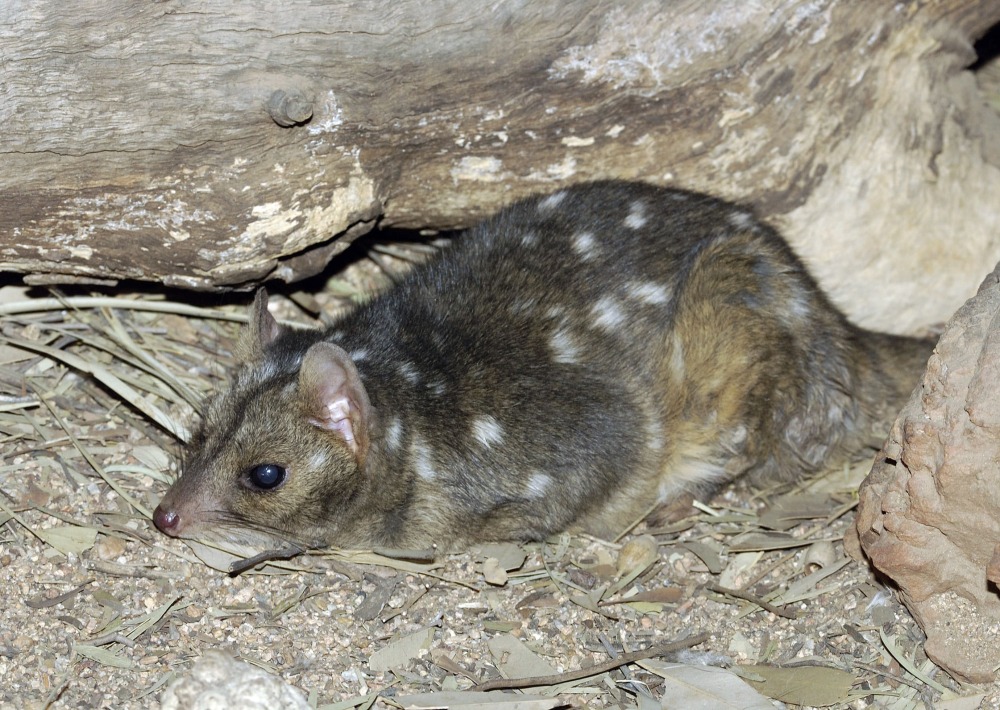
Northern Quoll, by John Carnemolla
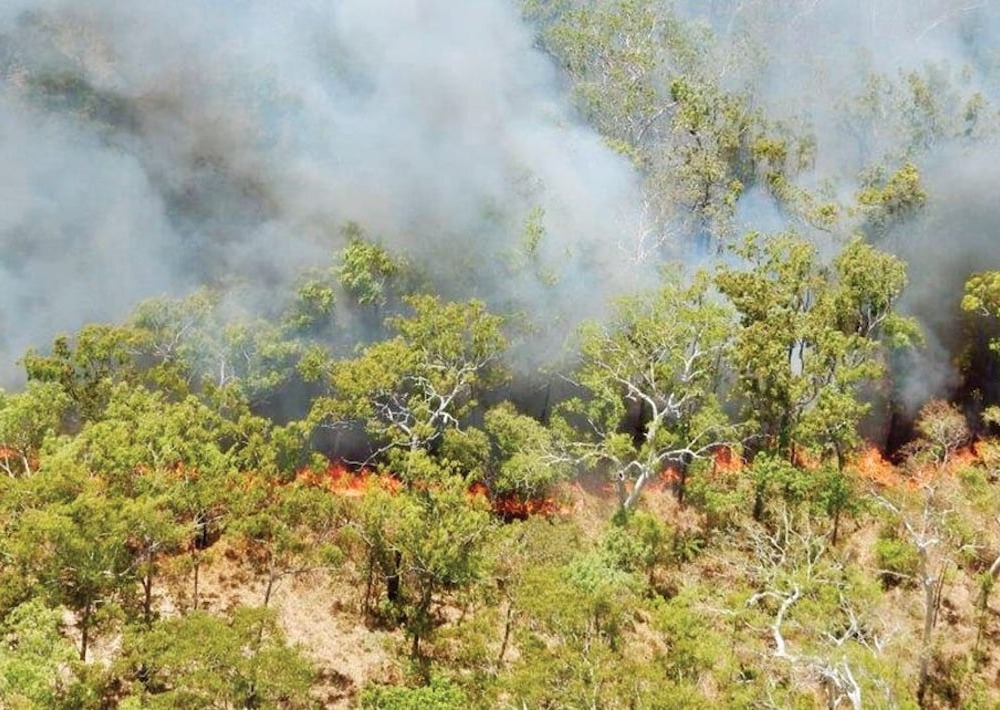
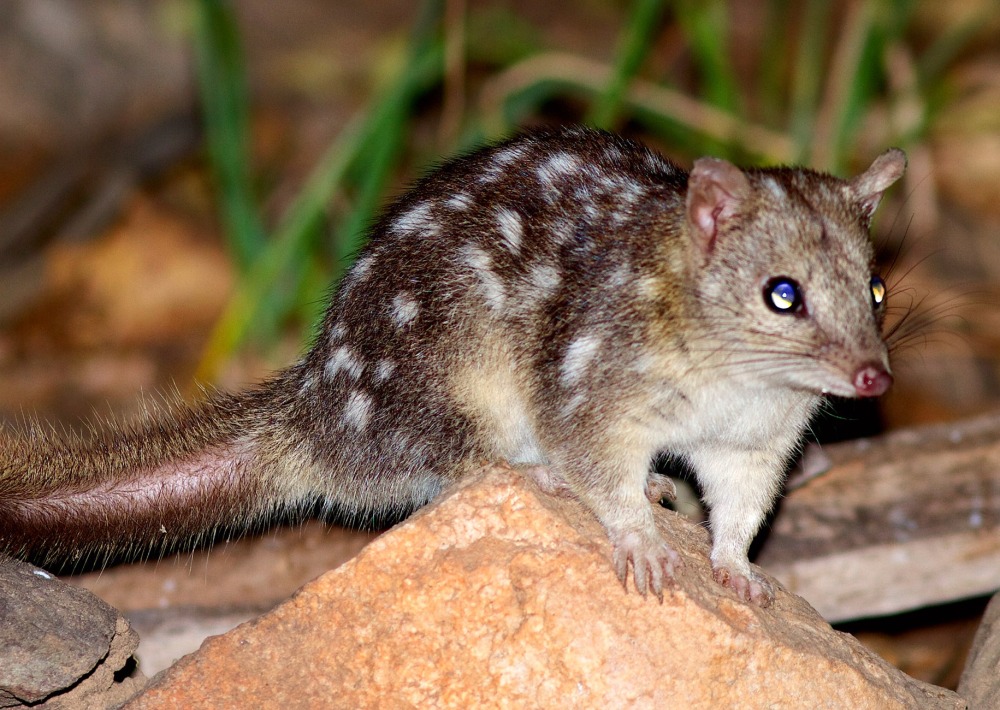
Northern Quoll, Australia, by South Endeavour Trust
Biodiversity
The area sits at the junction of the Wet Tropics, Cape York and Einasleigh Uplands bioregions, which means that it is exceptionally diverse. It contains 28 regional ecosystems, 20 of which have low or no representation in the Australian protected area network.
The presence of a very significant population of the Endangered Northern Quoll has been confirmed on the proposed protected area, as well as several Vulnerable and Near Threatened bats. The Northern Quoll is listed as Endangered because of its significant population decline over the last decade due to habitat degradation and destruction, and has been negatively impacted by the introduction of invasive species such as the Cane Toad and feral cat. Due to access issues, no flora survey has yet been conducted on the property, but ongoing surveys on three neighbouring properties have so far resulted in 1,023 plant species being recorded. This largely represents the notable diversity of regional ecosystems where the three bioregions join. A number of these species are yet to be described, while many others represent substantial extensions of range. Similar exceptional plant diversity is expected to be revealed on Caloola.
Challenges
The major threats to this area come from its proximity to the coast and to Cooktown, meaning it is a prime spot for residential or agriculture development.
If not purchased for conservation now, its value as an undisturbed forest could easily have been compromised. The weed-free and undisturbed nature of the property is almost entirely due to the lack of roads, which could change with just one bulldozer, considering weed invasions in Australia are closely linked to vehicle movements. Such development would also likely cause increased sediment coming off the property, further increasing the threat to local sections of the Great Barrier Reef. Other threats include unmanaged wildfires and feral animals. Given the property had been put up for sale, if it had not been secured for conservation now, it would have been extremely likely that it would be lost forever.
Communities
Caloola was private property and had no direct community involvement.
However, the project will involve the regional scientific and conservation community, including volunteer groups who will work on the land to ensure soil erosion does not occur and further degrade the reefs off the coast. Also, there is a need for effective fire management that will require the assistance of the property’s neighbors. Some neighboring land owners with private holdings along parts of the northern boundary of the property are very supportive of the protected area and encouraged our partner to purchase it for conservation. It will be vital to obtain cooperation of all neighboring landowners in managing fire and illegal access. The Cook Shire Council also notably draws their water supply for Cooktown from a small weir on the Annan River on the eastern boundary of the property.
Solutions
Rainforest Trust sought $1,414,129 to support our local partner in the purchasing and protecting in perpetuity of the 44,725-acre Caloola property.
Rainforest Trust sought $1,414,129 to support our local partner in the purchasing and protecting in perpetuity of the 44,725-acre Caloola property. The proposed protected area will be a private reserve protected under government legislation as part of Australia’s National Reserve System, importantly connecting about 700,000 acres of reserves and parks. It will share a six-mile river boundary with Annan River National Park. Two significant state wildlife corridors cross and join on Caloola Station, while the property also connects the coastal Annan River National Park and parts of the Wet Tropics to our partner’s private protected areas to the west. There are additional government reserves to the south and both indigenous-owned protected areas and national parks to the north. Where our partner’s protected areas share boundaries with government protected areas, our partner will work closely with the public sector on issues such as fire, feral animals, weeds and illegal access. The proposed protected area will also make a significant contribution to maintaining water quality for those parts of the Great Barrier Reef World Heritage Area off the mouth of the Annan River. Maintaining and improving reef water quality is the single largest conservation initiative in Australia.
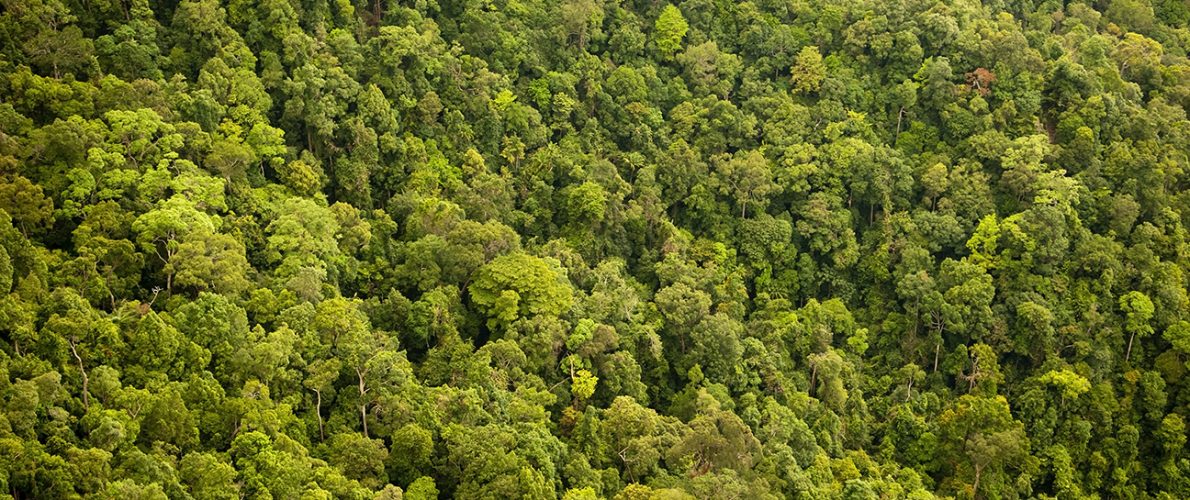
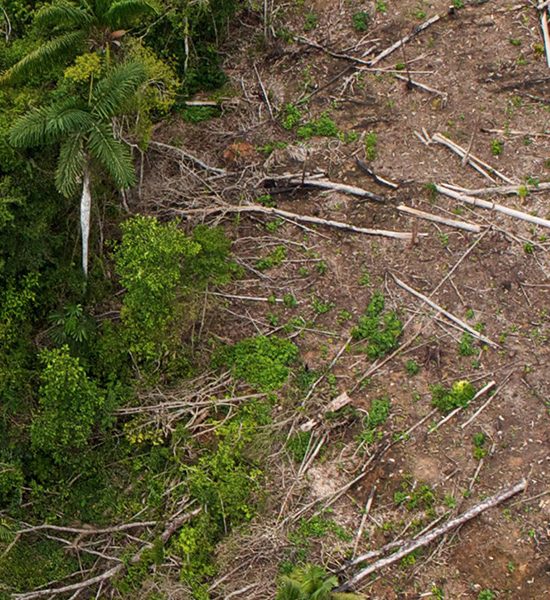
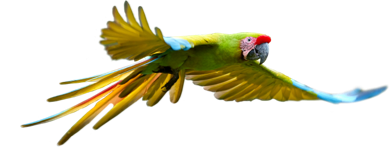
Sign up to receive the latest updates
"*" indicates required fields
100% of your money goes to our conservation efforts
Our board members and other supporters cover our operating costs, so you can give knowing your whole gift will protect rainforests.

